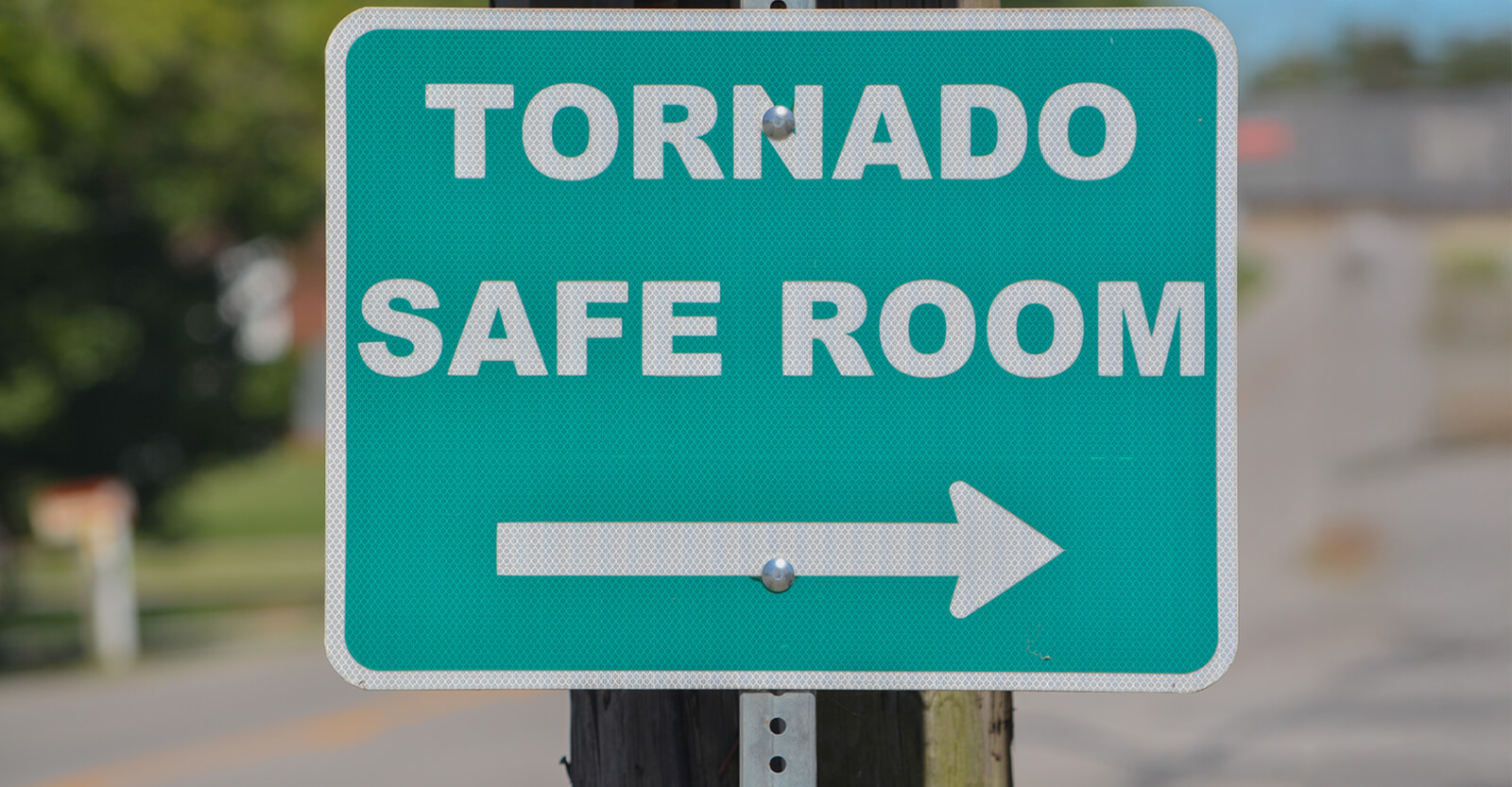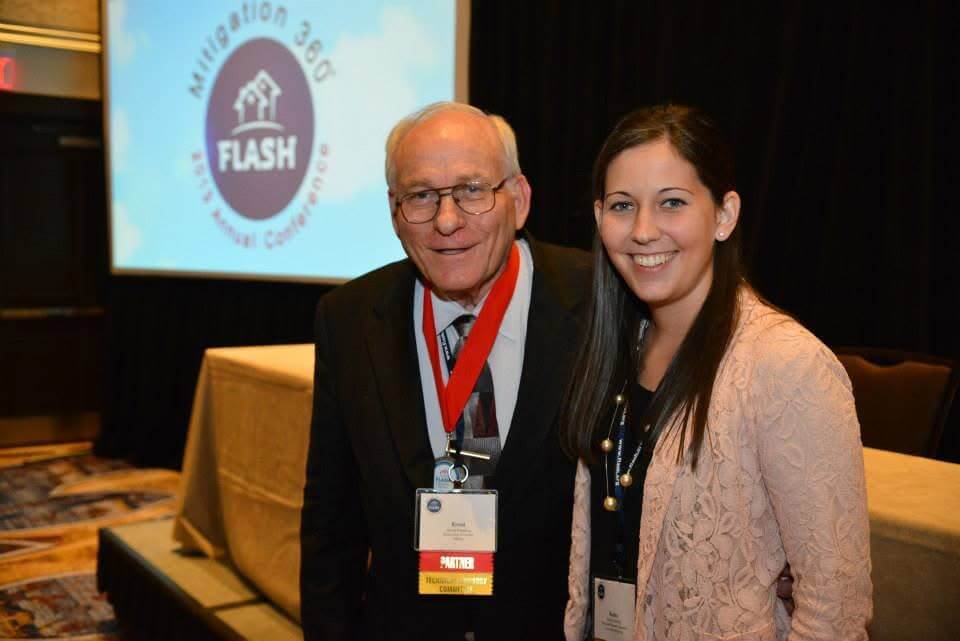
Tornado Safe Rooms: Your Family's Best Defense
April 4, 2025 — Disaster insights | Homeowner insights
Tornadoes are one of nature’s most unpredictable and devastating natural disasters. For homeowners living in Tornado Alley, being prepared isn’t just a precaution—it’s a necessity.
Audra Lehman, leader of resilience advocacy for SageSure’s Home Services team, is passionate about helping families protect what matters both through mitigation programs and preparedness education.
“Most preparedness checklists focus on what you can do at the start of severe weather season,” Audra said. “One thing that I would push for, but takes a lot more planning, would be installing a safe room or above-ground storm shelter.”
A tornado safe room is a fortified space within a home or building built to shield individuals from powerful winds and flying debris during tornadoes and severe storms.
Audra’s advice is rooted in personal experience. As a child, she survived a tornado that destroyed the building she was in. Her experience emphasizes the importance of having a safe and secure shelter when tornadoes strike.
AUDRA’S STORY
As a child, Audra’s family normally gathered for lunch on Sundays at her aunt and uncle’s house in rural west Texas—a farming community without tornado sirens. The only warning they had was the ominous sound the tornado made as it approached, similar to a train whistle.
When the whistle sounded, Audra, then in kindergarten, and her family huddled in a small entryway closet. When the tornado passed, the family emerged from the only part of the home that still had the walls, ceiling, and door. She vividly remembers being barefoot and carried out of the home, over broken glass and debris.
Thankfully, everyone survived, but this event prompted her parents to install a storm shelter.

Audra’s firsthand experience shaped her professional journey. She studied civil engineering with a focus on natural hazards and the built environment, earning a PhD from Clemson University. But her passion for tornado preparedness runs even deeper. Her great uncle was Ernst Kiesling, known as the “father of the safe room,” who pioneered the development of above-ground storm shelter standards and founded the National Storm Shelter Association in 2001. Now, Audra carries on that legacy, blending personal conviction with scientific expertise to help protect families from the unpredictable force of tornadoes.
SAFE ROOMS SAVE LIVES
One of the most effective ways to protect yourself and your loved ones from tornadoes is by investing in a safe room. A safe room tornado shelter is a reinforced structure built to stringent requirements and provides near-absolute protection in extreme wind events, including tornadoes and hurricanes, according to FEMA’s safe room overview.
Key Features of a safe room:
- Built with impact-resistant materials to withstand high winds and flying debris.
- Offer a secure space for family and pets during a tornado.
- Meets or exceeds FEMA P-361 guidelines for extreme weather safety.
Safe rooms can be installed during new construction or can be retrofitted to an existing home. Homeowners have many options for construction and placement—safe rooms can be site-built or prefabricated, and they can be placed above-ground, in-ground, or in a basement. You should work with your builder to determine the best option for your family.
TORNADO SAFE ROOM COST
According to the Federal Alliance for Safe Homes (FLASH), the cost to install a safe room varies from about $3,000 to $9,500. This can be a significant investment for homeowners, but funding assistance is available. For more information on tornado safe rooms, see FLASH’s guidance.
Grants
FEMA has pre- and post-disaster grants available that can cover up to 75% of the cost of the project. It’s important to note that homeowners can’t apply for these directly; grants are awarded to states, communities, tribes, or non-profit organizations, who then manage the funding. You can contact your State Hazard Mitigation Officer to learn more about available programs in your area, and see FEMA’s homeowners guide.
Financing
- Many credit unions in tornado-prone states offer storm shelter loans. Check with your local credit union for more information on rates and terms.
- Borrowers can include storm shelters as an eligible work item for FHA 203(k) rehabilitation loans and FHA 203(b) financed new construction.
- If you have equity in your home, you can consider borrowing against it with a home equity loan.
STAY PREPARED
A safe room is the best way to shield your family from a tornado and should be included as part of a comprehensive preparedness plan. Here are essential steps homeowners should take.
Tornado Preparedness Checklist:
- Create an emergency plan. Ensure every family member knows where to go and what to do when a tornado warning is issued.
- Assemble a disaster kit. Tornado preparedness kits can include non-perishable food, water, flashlights, batteries, a first-aid kit, NOAA hand crank radio, medications, and important documents. Make sure you include pets in your plan. Audra recommends following this disaster supply checklist.
- Stay informed. Monitor local weather reports and follow instructions.
Tornadoes are unpredictable, but with careful planning and preparation, you can protect yourself and your family from their devastating effects.
